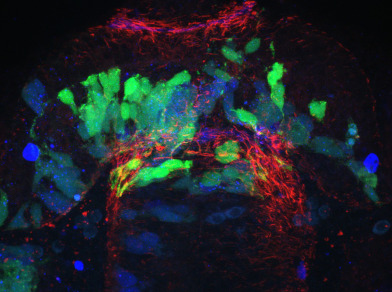The published Gli2DR (you-too, yot) exhibits significant and obvious commissural defects in the zebrafish diencephalic post-optic commissure (POC). The POC is a parabolic ribbon like structure which connects the two halves of the ventral anterior nervous system. It develops in concert with a host of glial cells, called a glial bridge, which has been proposed by us and others to perform the region for POC development. We have built ΔSCOPE as a computational analytical tool to quantify POC and glial bridge development. We use the visually apparent defects in POC development to ascertain whether ΔSCOPE is able to detect POC defects and whether they agree with the visual appearance of the you-too mutant. We have run ΔSCOPE alignment on wild type and you-too POCs twice with independent user input to determine whether results are reproducible. We have compared these results with the original semi-quantitative analysis published in Barresi et al. 2005. We find that our results are in agreements with these findings. We also observe that ΔSCOPE exhibits greater sensitivity to the position and axis of POC disturbances than in Barresi 2005, as well as greater statistical power.
Validation Experiment DOI: https://doi.org/10.35482/bld.001.2019
2019
Validation Experiment: Wild Type, Probability, Barresi Lab, Smith College
Validation Experiment: Wild Type, Psi, Barresi Lab, Smith College
Validation Experiment: Wild Type, Raw, AT, Barresi Lab, Smith College
Validation Experiment: Wild Type, Raw, Gfap, Barresi Lab, Smith College
Validation Experiment: You-too, Probability, Barresi Lab, Smith College
Validation Experiment: You-too, Psi, Barresi Lab, Smith College
Validation Experiment: You-too, Raw, Barresi Lab, Smith College

